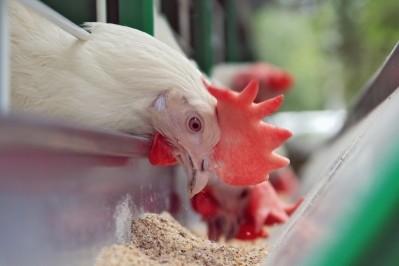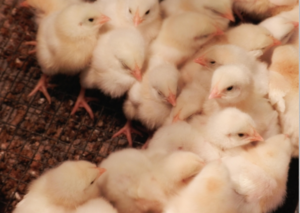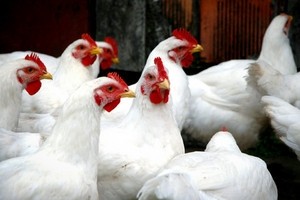Brewing residue could support broiler industry in aflatoxin battle

The authors, writing in this month’s edition of Poultry Science, said in vitro tests indicated a beer fermentation residue (BFR) containing Saccharomyces cerevisiae was partially effective in binding Aflatoxin (AF) B1, which can seriously undermine the health status of the chicks.
The team, including scientists based at the universities of São Paulo in Brazil and Missouri in the US, found the addition of BFR to an aflatoxin B1 (AFB1) tainted broiler feed showed the compound “ameliorated some performance (FI and BWG) and serum biochemistry variables (ALB, TP, GLO, and CA), in addition to reducing the severity of histopathological changes in the liver caused by the AFB1.”
Though the data indicates the compound, at 1% of the diet, was not totally effective in tackling the toxicity that results from Aflatoxin B1 contamination, the researchers conclude: “BFR can be an additional option available to poultry producers to ameliorate the negative effects of AF.”
In addition, the animal scientists say as BFR is rich in proteins, amino acids, and B vitamins it brings nutritional value to a broiler diet.
Health risk for poultry
Aflatoxins (AF) occur worldwide, mainly in tropical and subtropical climates, are produced by Aspergillus species and are capable of growing on a wide variety of substrates and under various environmental conditions.
They are frequently found in feed and AFB1 is reported to be the most prevalent and toxic of 18 AF types discovered so far.
In poultry, the main manifestations of aflatoxicosis include reduced egg production and weight, increased liver fat, changes in serum enzymes, weakness, enlargement of organs such as liver and kidney, and increased susceptibility to diseases such as salmonellosis and candidiasis.
In addition to losses due animal health being undermined, there are also economic damages resulting from AFB1 tainted feed that compromise poultry production including growth rate reductions, feed conversion, and immunity challenges.
Using published poultry data and regression analyses, Dersjant-Li et al. (2003) predicted that for each increase of 1 mg per kilogram of aflatoxin in the diet, there is a 5% decrease in the growth rate of broilers.
The negative impact of AF on health and production losses have led industry to hunt for products to prevent their formation in feed, as well as to eliminate, inactivate, or reduce their bioavailability in contaminated products.
“Biological decontamination methods, which use microorganisms such as bacteria and yeast, have been noteworthy since they are efficient, specific, practical, large scale, and present cost-benefits. Yeast cells, widely used in food fermentation and preservation, have shown promising results for decontamination of AF,” said the authors.
So in that context, the US and Brazilian researchers wanted to determine the effectiveness of this yeast based ingredient, generated by beer fermentation, in terms of AFB1 binding capacity and to see if it would be useful in limiting the effects of the mycotoxin on broiler performance, serum biochemistry, and histology.
The study
The authors report that the BFR was collected from a microbrewery, and the yeast cells counted, dried, and milled before being used in the trial.
In vitro evaluation of the BFR was conducted using different concentrations of AFB1 and 100 mg/10 mL of BFR at pH 3 or 6, they added.
The team assigned 200 one day old male broilers to chick batteries and allowed them free access to feed and water.
A completely randomized design was used with five replicate pens of five chicks and the birds were assigned to one of four dietary treatments from hatch to 21 days of age, said the researchers.
The diets included a basal diet (BD) with no BFR or Aflatoxin B1, a BD supplemented with 1% of the BFR, a BD with 2 mg of AFB1 per kilogram of feed added and a basal diet including 2 mg AFB1 per kilogram of feed but also 1% of BFR.
Performance variables were determined weekly, while serum analyses were performed on day 14 and day 21, sadid the scientists.
At the end of the study, the chicks were anesthetized with carbon dioxide, euthanized by cervical dislocation, and the kidney, liver, and bursa of Fabricius were removed for determination of relative weights, and for histological evaluation.
In vitro assays, found the authors, showed the higher the initial AFB1 concentration in solution, the greater the AFB1 amount absorbed by BFR at both pH levels tested.
Feed intake, body weight gain, and concentrations of albumin, total protein, and globulin increased in broilers fed the basal diet supplemented with 2 mg AFB1 per kilogram of feed and 1% of BFR when compared to the birds receiving only AFB1.
“Although BFR was not able to reduce or prevent the effects of AFB1 on relative weights of kidneys and liver, it reduced the severity of histological changes in the liver and kidney caused by AFB1,” concluded the team.
Source: Poultry Science
Published online ahead of print: doi: 10.3382/ps/pev067
Title: Efficacy of beer fermentation residue containing Saccharomyces cerevisiae cells for ameliorating aflatoxicosis in broilers
Authors: F. Bovo, L.T. Franco, E. Kobashigawa, G. E. Rottinghaus, D. R. Ledoux, C.A. F Oliveira















